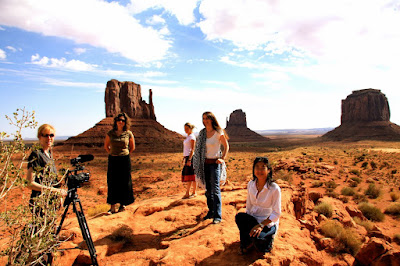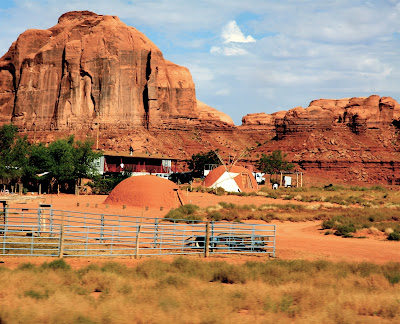
The photo above features Seane Corn (Off the Mat and Into the World), Melinda Kramer (WEA), Amira Diamond (WEA), Julia Butterfly Hill, and Suzanne Sterling (Off the Mat).
Transforming Women’s Lives, Transforming the World
On October 20th, the international non-profit organization Women’s Earth Alliance convened a gathering in Culver City, CA – bringing together incredible artists, activists, and business leaders at the sustainably designed and run Akasha Restaurant, to share their inspiring model of organizing and partnership. I was honored to speak about why I am so involved in this organization and its way of being and working in the world.
Transforming Women’s Lives, Transforming the World
On October 20th, the international non-profit organization Women’s Earth Alliance convened a gathering in Culver City, CA – bringing together incredible artists, activists, and business leaders at the sustainably designed and run Akasha Restaurant, to share their inspiring model of organizing and partnership. I was honored to speak about why I am so involved in this organization and its way of being and working in the world.
***
We all know we live in a world full of problems. But one of the biggest problems is that not enough of us know that we also live in a world full of solutions. And on top of that, too many people on the front lines of the problems do not have access to the myriad solutions that are available and manifesting every day.
Many years ago, I sat on a living room floor and had a visioning conversation about an emerging model of organizing around women and the environment. Looking at the old paradigm of top-down models and support mechanisms that often perpetuate the legacies of colonialism, imperialism, and inequity, we heard the call for a model of partnership based in the belief that those who have “less” are in no way “less than.” And that seemingly unlikely allies often hold critical keys to solving the problems our Planetary Family faces.
There has been a lot of investment around the intersection of the environment and… well, just about everything at this point. With countless groups and individuals directing massive amounts of well-intentioned capital towards communities that are marginalized, oppressed and plundered, why is our world not further along the track of health, justice, peace, and thrivability?
It is apparent that even with the best of intentions, lasting change does not happen on the surface level, nor does it happen with the best and biggest of visions brought into communities from the outside and labeled as the “right” vision. Real and lasting change happens from the ground up and the inside out. The real strength of a pyramid is at its base, its foundation. It is one thing to have a grand vision, and it is another thing altogether to manifest that vision into reality in our very complex world.
And although I don’t claim to hold all the answers, I do know that working from the ground up and the inside out is vital, and it takes time. Time equates to resources, and funders often do not know how to make relationships and trust-building fit into graphs and pie-charts. What results is that the crucial task of relationship building in support of a just, sustainable world often falls through the cracks of the fundraising methodology and process.
However, a new wisdom is re-emerging, one that is actually ancient. To solve the global crisis, which we ourselves have created through our disconnection from the Earth and one another, we must restore our relationships, build trust amongst one another, and create spaces for everyone’s gifts to come forth.
Early on in my days of living in an over 1,000 year old redwood tree to keep it from being cut down, I began to learn the importance of building relationships because my life literally depended on it. I was yet another well-intentioned “outsider” who had come starry-eyed to the California Redwoods ready to save the trees and the world – and I quickly learned that I needed relationships to survive. I had to figure out how to build relationships, a support network, and an effective team. I had to discover that “preaching “ to the loggers only made them hate me more, so I needed to build trust and understanding with them as well. Finally, I had to engage alliances and partnerships in the surrounding communities, with Native people, and with the labor movement (which happened with the United Steel Workers of America.)
After living in that incredible tree for over two years, I was able to come down with a successfully-negotiated agreement to protect the tree and the grove around it. If it had just been me in that tree, I would never have survived, let alone succeeded in the goals. It was the building of relationships that co-created that success.
***
Women stand on the front lines of the biggest environmental crises facing our species today – including the lack of access to clean, safe drinking water; the industrialization and poisoning of agriculture; and the exploitation of land for cheap, dirty energy. When we build a bridge between solutions and resources to the women who are managing resources and stewarding future generations in our world’s most imperiled regions, we change the course not only of a community, but of the world. When a woman has access to the resources she needs for self-determination, health, and thrivability, what we see time and again is that everyone and everything around her benefits.
Flashing back to that living-room floor. Our conversation was the launching pad for what is now Women’s Earth Alliance, an international organization co-creating innovative solutions to issues of water, food and energy through collaborative initiatives that train, connect, and empower emerging women leaders. I am honored to be a founding and ongoing advisor and donor to and with this organization, the women who staff it, and the women who are served, uplifted, and empowered through this model. Through these women, entire communities are transforming – and when a community is transformed, so too is our world transformed. This way of doing the “work” is not only essential and vital, but also, brings an aliveness to the conversation, thoughts, process, and experience as well.
Knowing where this organization started and how far it has come since its inception, I am so proud and grateful to be a supporter and a partner in this work. It is such a gift—to the women of WEA, to the world, to future generations, and to me. I invite you to check out their website www.womensearthalliance.org to find out more information, to be inspired, and to see if there is a way you might weave yourself into this work.































